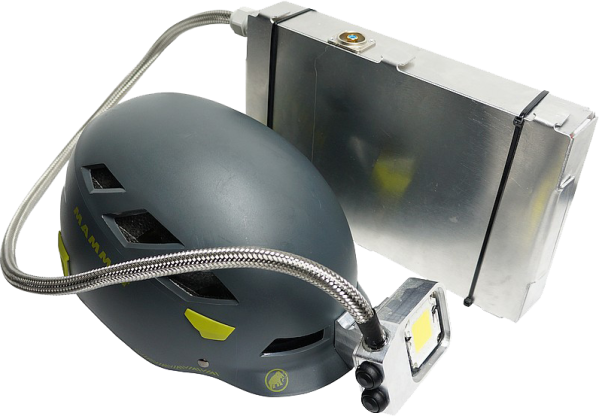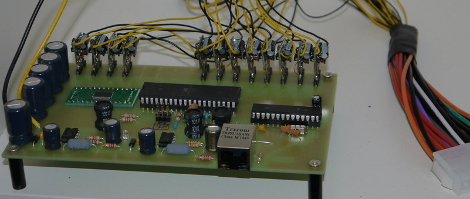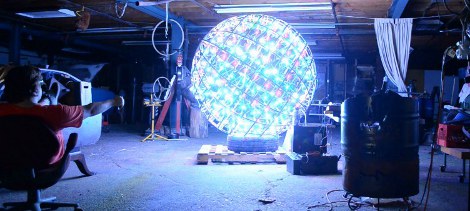There are extremely high powered LEDs out there, and most of the ‘creative’ uses of these are extremely high-powered flashlights, complete with heatsinks, forced air cooling, and beefy power supplies. [Christian] wanted to play around with one of these LEDs, but he wanted something a little more unique. He chose a headlamp, a build that is made even more impressive by the fact it is watercooled.
The body of the headlamp was milled out of aluminum, with a space for the LED in the front and channels in the back for coolant. Also in this enclosure are two buttons, a temperature sensor, and a port for the hose that carries the tubes and wires.
This hose connects to a large battery pack that houses four large lithium phosphate batteries and a boost converter built around an Arduino. The pack also houses a pump and reservoir that is able to keep the LED cool even at 130W.
















